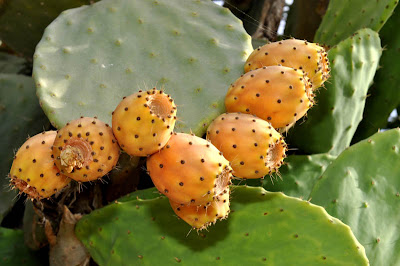 |
| Mediterranean meadow-saffron (Colchicum cupanni) |
In temperate regions autumn is generally regarded as a melancholic season that announces the end of summer, the arrival of winter darkness and cold stormy weather. Most Maltese have been brought up with this idea when in actual fact autumn in Malta is a time of rebirth and growth.
In ecological terms the Maltese year can be divided into two approximately equal seasons; the wet season and the dry season. Autumn is the beginning of the rainy season which comes immediately after six months of heat and drought.
The first autumn rains bring life back to the parched countryside changes from brown to green as the seeds of annual plants which had been dormant in the soil throughout the dry season start germinating.
The rains also stimulate plants which survive the dry season as bulbs, corms or tubers to start growing again. Some species such as the Mediterranean meadow saffron (busieq) flowers a few days after the first rains. The flowers appear before the leaves emerge from underground.
This gives these plants an advantage over other autumn flowering plants as they have to compete with fewer flowers to attract bees and other pollinating insects. The flowers of the meadow saffron are soon followed by others such as the autumn ladies tresses (ħajja u mejta tal-ħarifa) a small rare orchid.
The list of autumn flowering plants includes the yellow-throated crocus (żagħfran selvaġġ) and, the autumn narcissus (narċis imwaħħar)
Carob trees (siġar tal-ħarrub), which are either male or female, flower from mid-October to mid-November. The flowers have a strong smell of decomposing vegetation which attracts flies which inadvertently carry pollen from one tree to another.
The rains also stimulate many species of fungi to put forth the fruiting bodies with which we are familiar.
This article was published in The Times on 3.10.2010
























